Having an attic is not only fun but also very useful, and it doesn’t even matter if you’ve transformed it into a living space or are just using it as a collector of anything and everything discarded.
What’s important is to acknowledge its crucial function in the energy efficiency of the house.
This article will highlight that and many other functions the space above your main house has. You’ll also get recommendations on the best AC solutions for the attic.
Comparison of the Best Attic Air Conditioners
| IMAGE | PRODUCT | |
|---|---|---|
Our Top Pick  |
| View Latest Price → |
 |
| View Latest Price → |
Best Budget Option  |
| View Latest Price → |
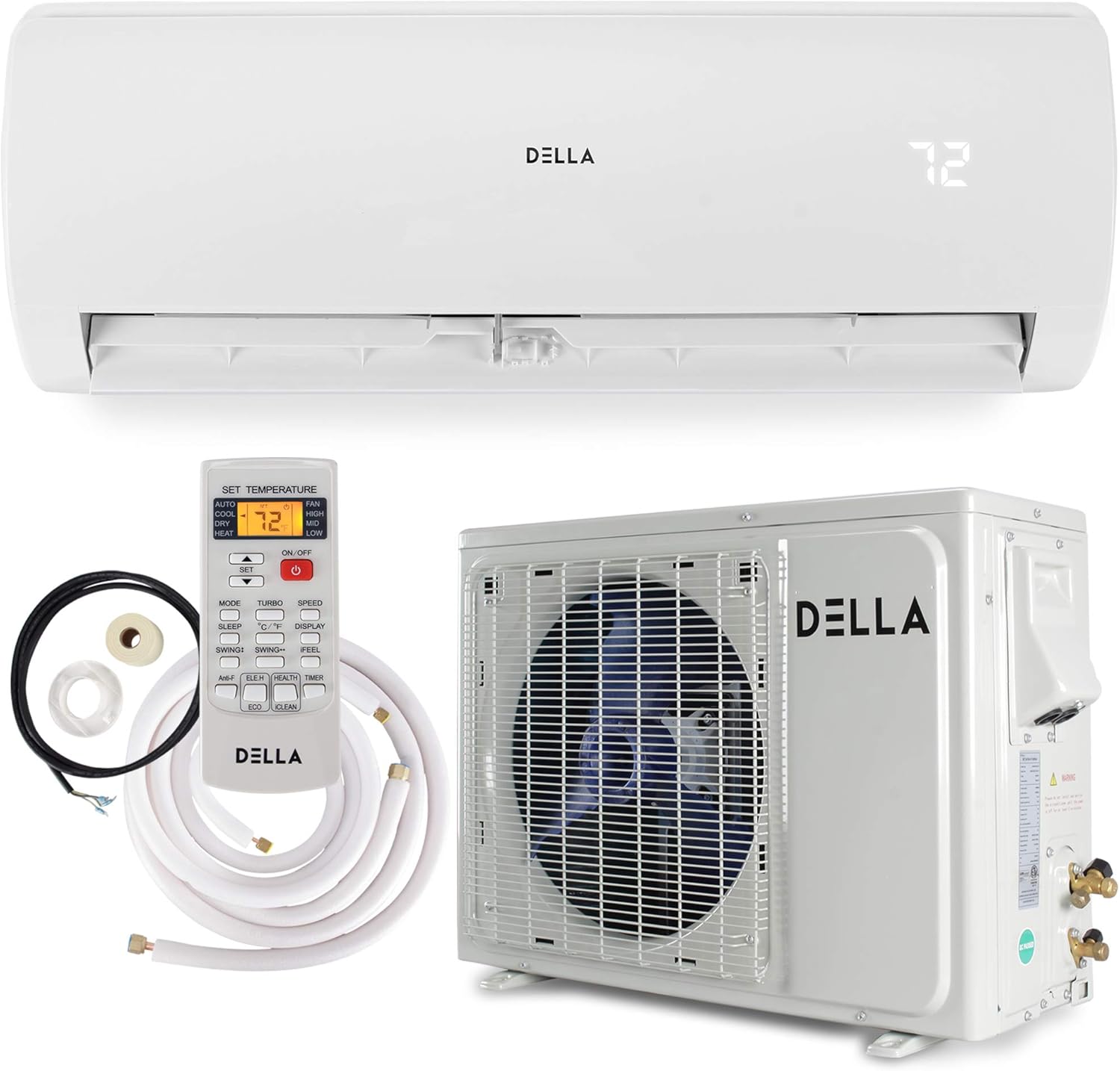 |
| View Latest Price → |
 |
| View Latest Price → |
Factors to Consider Before Buying an Air Conditioner for the Attic
Whether you’re using the attic as a room, a storage space, a workshop, or for anything else, it’s a good idea to keep the temperature there under control. Let’s see what you need to know about attic ACs before buying one.
Choices for the AC Type
You have a few AC options suitable for attics. Depending on your goals, consider a central air conditioner, a mini-split, or a portable system. While many factors can influence your decisions, it’s nice to have the options to choose from.
Among those factors are the budget, the HVAC system goal, how much construction work you’re aiming for, and if you just need a solution for keeping the temperatures steady in the room.
Whole House or Attic Square Footage
No matter the type you choose, you need to know how large is the area the AC is going to be serving. Once you’re aware of the square footage, choosing a suitable unit will be easy. Use BTU/area charts to identify the right cooling power for the appliance.
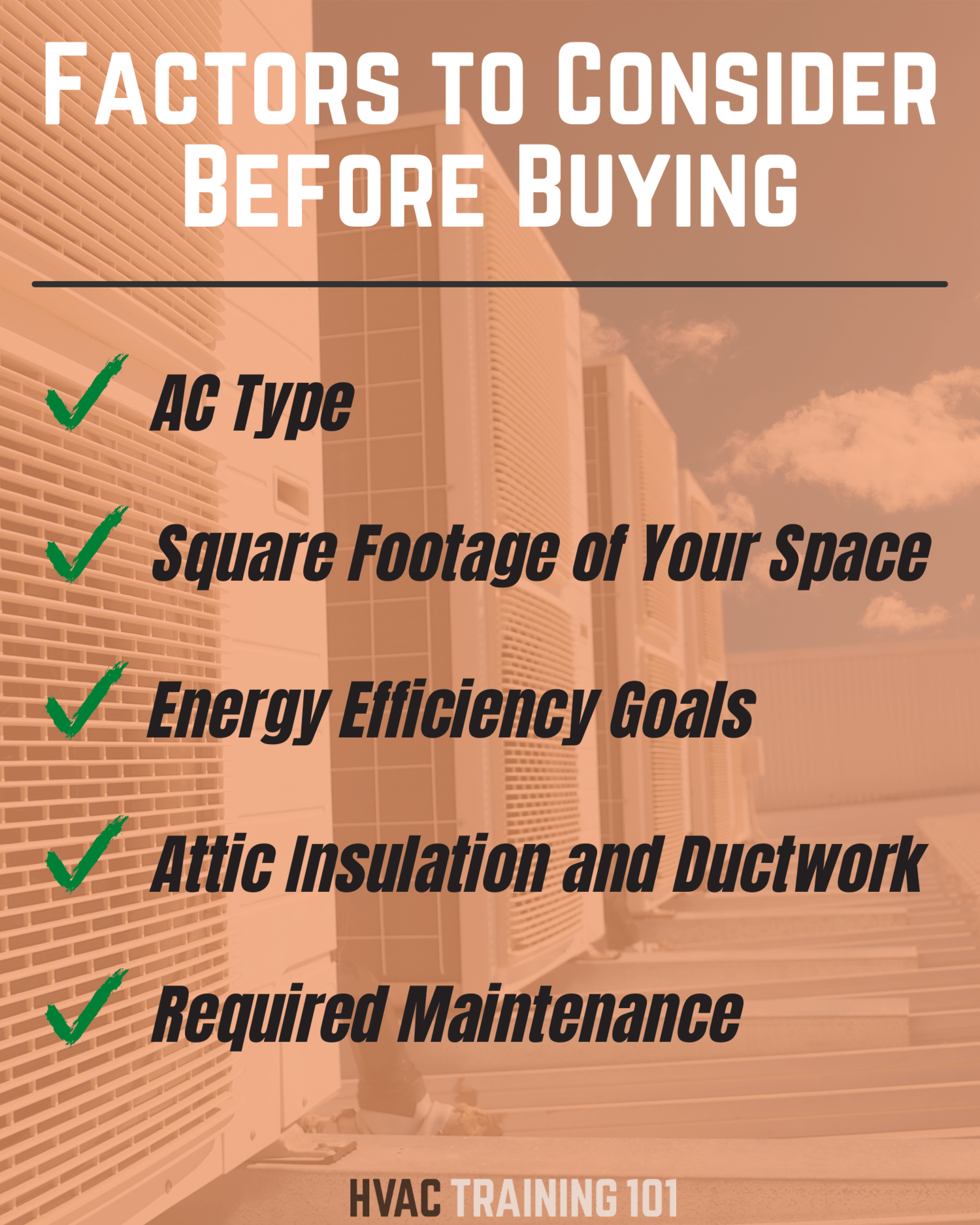
Your Energy Efficiency Goals
Once you know the BTU, think about how energy efficient your house will be for each unit option you’re considering. This will help you to control your environmental footprint and save on bills in the long run.
Attic Insulation and Ductwork
If your attic isn’t well-insulated, you might see money seeping through the cracks there. Make an effort to minimize the energy loss by covering all the damages and check the ducts for leakage.
How Much Maintenance are You Going to Need?
Depending on how much maintenance you’re ready to go through, you might need to reconsider your AC types. Installing a central AC can be more expensive and take days. Alternatively, a wall-mounted unit takes a few hours and a technician to install.
At a Glance: Our Top Picks for Attic Air Conditioners
- OUR TOP PICK: Pioneer WYS012AMFI19RL
- RUNNER-UP: Senville SENL-12CD
- BEST BUDGET OPTION: Mr Cool DIY-12-HP-115B
Review of the Best Attic Air Conditioners
As we can see, there are a few factors to consider while choosing an AC for your attic. We’ve compiled a list that offers help in getting the best system out of the best.
Best Overall
Pioneer WYS012AMFI19RL

Specifications
BTU (DOE): N/A
Coverage Area: 450-750 sq.ft.
Dimensions (in): 31.5×7.5×11.75
Weight: 19 lbs.
Decibel Level: N/A
We may earn commission from purchases made from our links, at no additional cost to you
Review
This is one of the latest Pioneer air conditioners, packed with the latest functionality, including wireless internet access for easy control from your smartphone.
It adds a few bells and whistles to the primary cooling, heating, dehumidification, and ventilation features. One of those is the automatic restart, where the AC recovers to the latest setting if the power goes off.
The night mode turns the unit into a silent and sneaky operation. You won’t even know, but the system will adjust the temperature according to your body temperature, helping you sleep better and wake up relaxed.
Bottom Line
The unit comes with all you need for installation and precharged with the R410a refrigerant. It can cool during summers of up to 122 F, so it’s an ideal choice for a hot attic.
With tested safety features and smart functionality, it can also stay unsupervised for a week or two and keep running at a given schedule.
Pros
Full installation kit included
Washable permanent air filters
WiFi connection and smart features
Temperature setting range of 62 to 90 F
Free technical support and a five-year warranty
Cons
More efficient cooling than heating
Runner-up
Senville SENL-12CD

Specifications
BTU (DOE): N/A
Coverage Area: 450-750 sq.ft.
Dimensions (in): 26×10.43×21.26
Weight: 66.14 lbs.
Decibel Level: 25 dB
We may earn commission from purchases made from our links, at no additional cost to you
Review
Senville’s LETO series is designed to accommodate hot and cold ambient temperatures. This particular model can cool about 750 square feet without any issue.
It offers the four main functions, plus lets you turbo cool/heat the room if you need a fast temperature change. Turn on the low noise mode when you sleep and start the “Follow me” feature to adjust the temperature according to your location in the room.
The filters are easy to access and clean with a vacuum or rinse with water. Just remember to let them air dry completely before placing them back in.
Bottom Line
If you’re searching for a relatively affordable and modern unit for your attic, opt for this one. It provides all the necessary functionality for keeping the space cool in summer and comfortable in winter.
Pros
Built-in washable filters
Modern and sleek design inside and outside
Four-in-one design with ventilation and dehumidification
Quiet operation with sleep mode, self-clean, and turbo modes
“Follow me” mode that adjusts the temperature according to your location in the room
Cons
A tricky process with the copper lines (in case of DIY installation)
Best for the Money
Mr Cool DIY-12-HP-115B

Specifications
BTU (DOE): N/A
Coverage Area: 500 sq.ft.
Dimensions (in): 40×36.5×32.5
Weight: 98.3 lbs.
Decibel Level: N/A
We may earn commission from purchases made from our links, at no additional cost to you
Review
Are you concerned about the costs of a professional installation? MR. Cool’s DIY line is all about hooking it up yourself. While handy users won’t have any difficulty with it, the company still recommends getting a technician to do it in the fine print.
This AC is one of the highest energy efficiency units on our list. It comes with a remote but can also work via a smartphone app and connect to voice assistants for convenience. It can also work unattended due to automatic controls and easy smartphone access.
The low ambient cooling feature makes it a good find for spaces that need an AC all year round. Your attic should be one of those.
Bottom Line
This unit is an excellent acquisition for homeowners with the desire to DIY their house. With high energy efficiency and a seven-year warranty on the compressor, this product will last you for the years to come and save money along the way.
Pros
Energy efficiency rating of 22
DIY installation and leakage detection
Variable-speed DC inverter compressor technology
Seven-year compressor and five-year parts warranty
Remote and smart controls via a smartphone application
Cons
Advertises DIY installation but has a legal disclaimer to invite a technician
Honorable Mention
Della 12,000 BTU

Specifications
BTU (DOE): N/A
Coverage Area: 450-750 sq.ft.
Dimensions (in): 34.4×11.5×8
Weight: 26 lbs.
Decibel Level: 30-41 dB
We may earn commission from purchases made from our links, at no additional cost to you
Review
This Della mini-split is one of the most affordable options among the 12,000 BTU units we mention. Although it only has a SEER of 17, it’s efficient with lower temperatures. If you’re living in a zone where the winters get cold, this unit can be what you need for your attic.
One of its highlights is the intelligent functionality with self-diagnostics and adaptability. Plus, you don’t have to clean the filter very often due to the self-cleaning feature.
It rocks four main features, including heating, cooling, ventilation, and dehumidification. The company advertises the unit as one that can be set to the right setting and forgotten about, which is just what you need for an attic. It runs on schedule and saves you on bills by adjusting the modes whenever required.
Bottom Line
The AC comes with the complete kit of installation material, although it offers a shorter line than most other units on the market (16 feet lines are standard). This Della unit can efficiently condition the air for a large, 1,500 square feet attic.
Pros
Silent operation between 30 and 41 dB
Auto-defrost and self-diagnosis/cleaning
Advertised as a “set it and forget it” model
Suitable for low ambient temperatures of up to -4℉
Simple, complete-control remote with a temperature sensor
Cons
10 feet line set instead of the standard 16 feet
Editor’s Pick
Daikin 24,000 BTU
Specifications
BTU (DOE): N/A
Coverage Area: 1,500 sq.ft.
Dimensions (in): 50x46x21
Weight: 128 lbs.
Decibel Level: N/A
We may earn commission from purchases made from our links, at no additional cost to you
Review
This model is a heavy-duty air conditioner to cover up to 1,500 square feet. Although with 17 SEER, it doesn’t shine in the energy efficiency department, it holds up pretty well at other criteria.
Due to clever louver engineering, the unit can cover a large room, while the turbo mode will allow you to feel the temperature change almost instantly.
Daikin’s 24,000 BTU unit also offers the most years of parts warranty on our list. You can rest assured that your attic will cool, heat, and ventilate to the highest standard.
Bottom Line
This powerful yet sleek unit is here to cool and heat your attic in the most delicate, quiet, and efficient manner possible.
The unit is engineered so that the indoor system operates at low speeds, making as little noise as possible. The inverter technology adapts the operation for the most optimal setting.
Pros
Ten years of parts warranty
Built to cool and heat large rooms
Inverter technology for maximum comfort
Reaching all the corners with wide-angle louvers
Quiet operation with as low as 37 dB (for the indoor unit)
Cons
One of the lower SEER on our list
Why Put an AC in the Attic?
There are a few specific reasons you’d want to control the temperature in the attic. In this section, we’re focusing on an AC that cools down and warms the room itself.

Your House Will Become More Energy Efficient
Attics can get scorching hot in summers and dreadfully cold in winters, making the whole house susceptible to the drastic heat changes throughout the year. If you manage to keep the temperatures steady in your attic, you’re creating a “protective dome” over the house.
Prevent Frequent Construction Work
As you might remember from your school years, materials expand when hot and shrink if it’s freezing. If your space has drastic temperature changes between summer and winter, the house might suffer.
By keeping the attic temperature consistent, you’re stopping the damage to its framing. Damages there can transfer to the whole house in the form of warped walls and peeled paintwork.
Less Damage to Your Roof
As explained above, hot and cold can damage not only the wooden framing but also your roof cover, leading to leakages and a degraded roof.
Advantages and Disadvantages of an Attic Air Conditioner
If you’re considering an air conditioner for your attic, make sure you know what to expect. Here are a few pros and cons of attic air conditioners (for mini-split and central units).
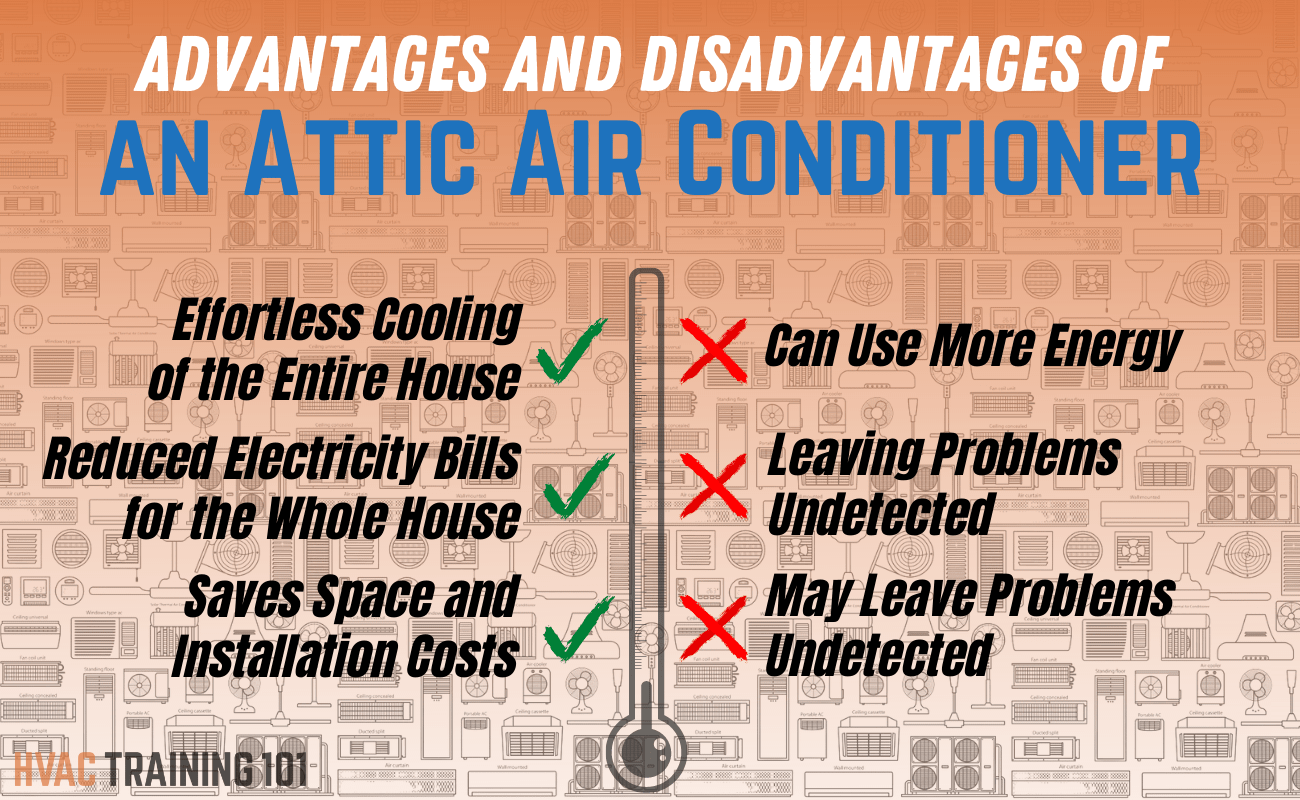
Effortless Cooling of the Entire House
The attic is the hottest spot in the house during summer. If your home is built with materials that heat more than others, it’s going to be a hell on earth. Keeping lower than usual temperatures in the attic can benefit the rest of your house significantly.
Reduced Electricity Bills for the Whole House
Let’s elaborate on the previous point and the whole house efficiency. Although you’re adding an extra unit in the attic, a reduction of the overall electricity bills is due after installation.
Central Attic Systems Save Space and Installation Costs
If you’re only using the attic as a storage space (not a living area), you might benefit significantly from installing the central AC unit there. It stays out of the way, saving you space in the basement or outside. The installation costs are also much cheaper for an attic unit, as the technicians don’t have to do extra work to cover up the ducts.
Attic ACs Can Use More Energy
This heading might seem counter-intuitive. In the end, having an AC running in the attic is supposed to save you money, right? But we’re only talking about the one unit itself and only in the attic area compared to other rooms.
The solution still drops the whole house operation cost drastically.
Leaving Problems Undetected
Another issue with central units that rest in the attic is that homeowners fail to notice the small problems in time. These trivial issues like leakages and minor failures can accumulate and harm the whole system, leading to higher maintenance costs.
We recommend that you check the system periodically, even if you don’t intend to repair anything. Being prepared for the problems will help you later.
What Type and Size of Air Conditioner Do I Need for My Attic?
It depends. If you’re installing a mini-split or a portable unit to cool just the attic, you need to use its area to determine the BTU of the AC. Installing this system will only cool or heat the attic, not the whole house.
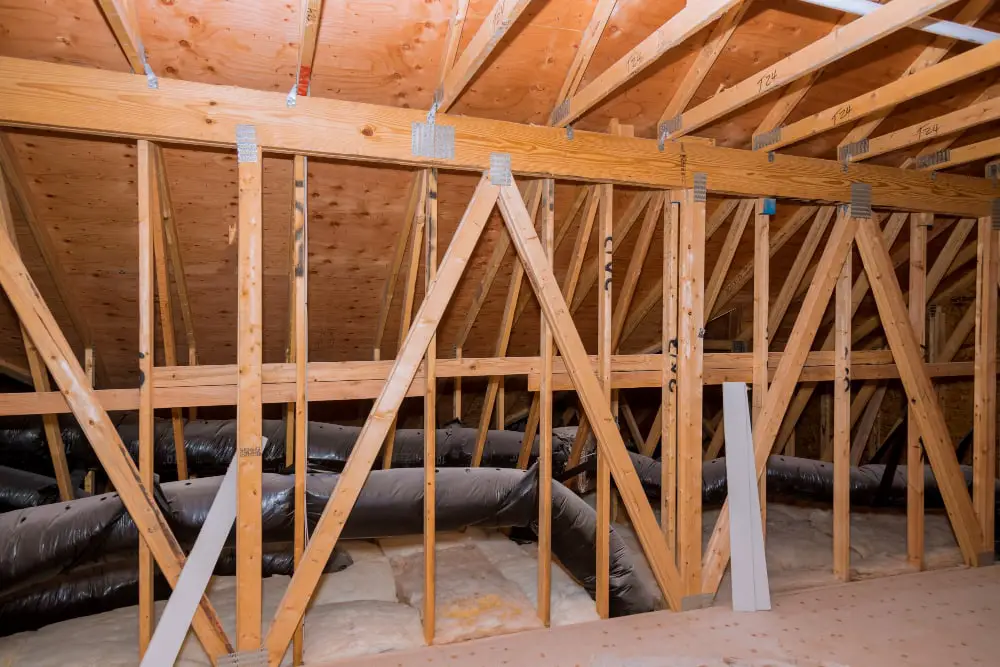
On the other hand, if you’re installing a central AC in the attic, using it as a storage space, you need to determine how big your house is and how many rooms it has. This will help you find the central unit capacity for the whole house.
We recommend that you get a professional evaluation not to make mistakes. Installing a whole-house system is expensive and requires trained technicians.
Who Should Not Buy an Attic Air Conditioner?
Although having an air conditioning unit in the attic can help keep your house in a better shape and make it more energy-efficient, there are situations when installing one isn’t the best idea. Although most of them are connected to the attic and roof renovation, they’re worth mentioning.

Leaky Roof
This one’s probably the most evident. If your roof isn’t doing its job properly (i.e., protect the house from sun and rain), adding an AC in the attic can’t help you. The first step would be to fix the roof cover.
The leakage refers to both air and water. In this case, you’re only adding to the energy bill without solving the root issue.
Old Windows
Your roof might be okay, but there can still be air leakage in the house. Old wooden frame windows usually have cracks and openings that let the air in.
Even if they’re made from newer materials like aluminum, PVC, or composite, you’re not always protected against leakage if they’re already a few years old. Check the windows against wind and fix the screws to ensure proper insulation before installing a new AC.
Non-Insulated Attic
While insulation in the windows is easier to spot, you have to search thoroughly for other cracks.
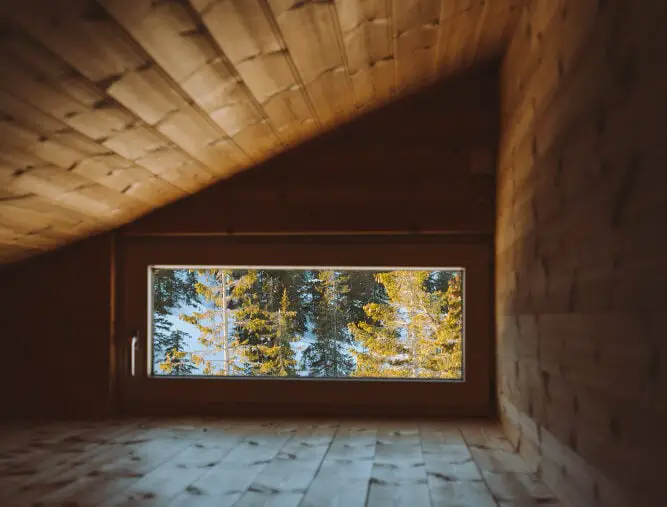
Your roof might be doing its job well, and still, you might be hearing the wind through the walls. In this case, you need complete attic insulation with proper materials so that the AC can be efficient.
Old Ductwork
Another, even less evident issue might be the holes and tears in the ductwork. To identify it, you might need the help of an HVAC professional. Let them determine their usability before you start thinking about a new AC unit in the attic.
Conclusion
Searching for the best air conditioner for your attic doesn’t have to be hectic. Once you know what to look for, there are plenty of options on the market. If you plan ahead, get your attic insulated, and all the leaks fixed, installing the suitable AC will be as easy as pie.
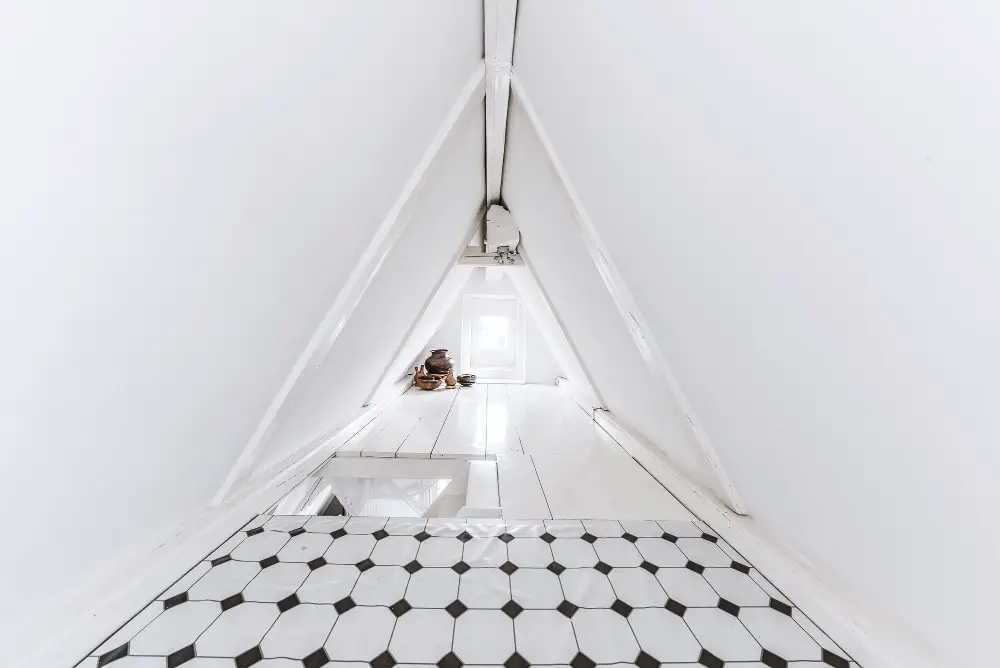
People Also Ask
Now that we’ve discussed all the pros, cons, and AC types that can work in the attic, let’s answer a few additional questions regarding the topic.
Absolutely. Regardless of what unit it is and its goal, you can have an AC in your attic. If you use it as a living space, a mini-split wall unit will be an excellent solution. In case it’s just a storage space, a central AC unit can go there.
Yes and no. If you opt-in for a whole-house unit and install it in the attic, it will. However, if you’re using a separately installed mini-split or a portable AC to keep the attic temperature under control, it won’t cool the whole house.
If you install the unit well and take up proper precautions (insulation around the setup, good ducting), it shouldn’t be dangerous. If we’re considering the mini-split option, some models allow for unattended operation.
Still, you better check the space periodically to ensure that the systems are working well.
If the condensate system works well and there are no other issues with the AC, there’s no reason for it to leak. Conduct periodic checks on the system to ensure proper operation, and your attic air conditioner will serve you for years.
